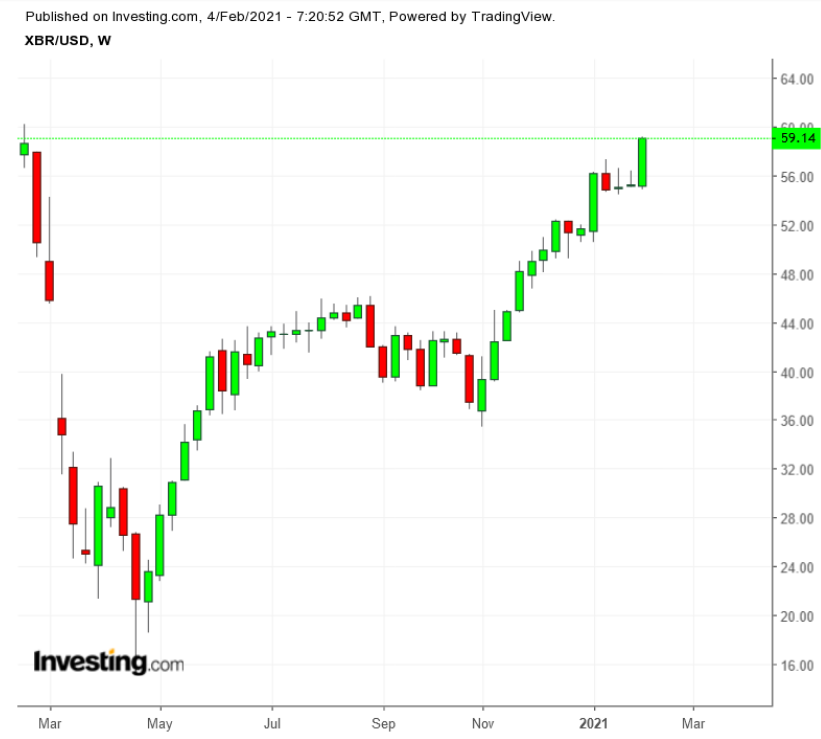With the price of oil up in the last three months (the Brent spot price was $39.68 on Nov. 4) and still rising, there is some optimism that maybe prices are heading for highs we haven't seen in years.

As we know, the price of oil is a mixture of market sentiment and fundamentals, meaning supply and demand. Right now, supply is easier to gauge.
We know that last week the U.S. produced 10.9 million barrels per day. We know the production quotas set by OPEC+. However, what everyone wants to know is the future of demand, and there is little consensus on that. In fact, at the same time as Saudi Aramco (SE:2222) touts what it sees as a full demand recovery by the end of the year and Goldman Sachs projected 100 million barrel demand by August, BP (NYSE:BP) said it “still expects oil demand to recover in 2021 but added that the pace and degree of the rebound depend on governments' policies and vaccine roll-outs.”
Positives for demand do include the increased availability of coronavirus vaccines and treatments as well higher oil usage globally and the prospect for more economic stimulus. Even with continued lockdowns and restrictions in many jurisdictions, human interaction and commerce cannot be entirely halted. We are still using oil.
However, oil demand numbers are dependent, in part, on the health of the economy, and there is negative news about the future of the global economy beyond the lockdowns and restrictions. President Biden’s top economic advisor recently described the U.S. economy as “spiraling downward.”
Despite vaccine optimism, many businesses are still experiencing deep financial distress, according to a recent survey by the Boston Consulting Group. Small businesses in particular experienced significant drops in revenue, and according to a Federal Reserve Survey, many small businesses that have survived are worried they will not fully weather the situation without government assistance. The Eurozone economy suffered a double-dip contraction in the last quarter of 2020, and the IMF lowered its expectations for European economic growth in 2021 by an entire percentage point to 4.2%. Prospects are even worse in South America, which is not expected to recover to pre-pandemic GDP levels until at least 2023.
Yet, most economic recoveries are quick. After the 2008 financial crisis, the economy took years to fully recover, but that was an anomaly. Historically, the deeper the recession, the sharper the recovery. This type of quick recovery is often referred to as a “V-shaped recovery.”
The question today is whether our recovery (with continued government-imposed restrictions and fear of illness in large portions of the population) will resemble historical norms or will be something new because of the unique conditions of this particular economic trauma.
